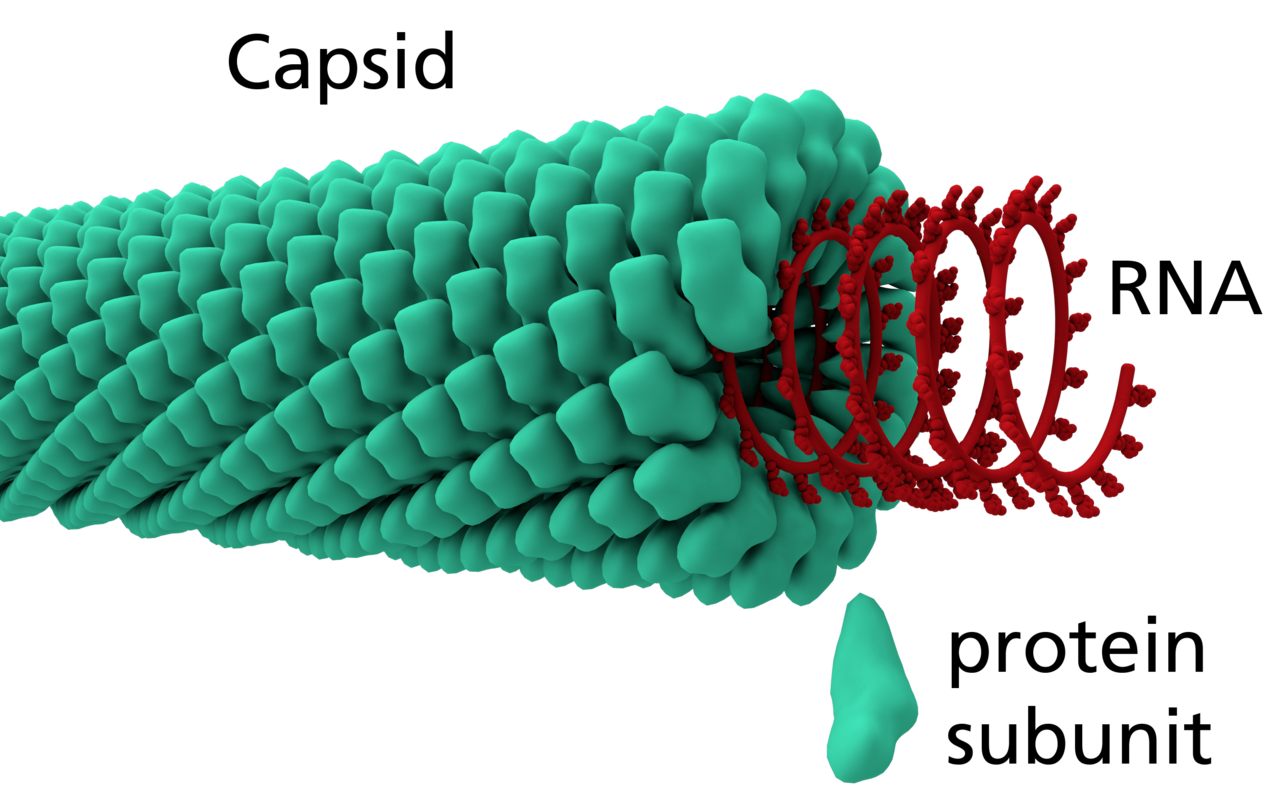In this article we will discuss about:- 1. Introduction to Tobacco Mosaic Virus 2. Symptoms of Tobacco Mosaic Virus 3. Causal Organism 4. Disease Cycle 5. Control
1. Introduction to Tobacco Mosaic Virus:
This is the best known of all virus diseases. The tobacco mosaic virus affects all dicotyledonous plants of which most important are tobacco and tomato. But it does not affect any monocotyledonous plants.
Although Adolph Mayer in 1886 first pointed out the mosaic pattern on leaves of affected tobacco plants, it was not until 1898 the first scientific proof of the existence of a virus was given by Beijerinck. Earlier than this, in 1892 Iwanowski demonstrated that tobacco mosaic virus would pass through a bacteria-proof filter.
He was able to demonstrate that a diseased tobacco plant juice was able to induce mosaic disease in healthy tobacco plants.
But Iwanowski could not find out the true significance of this. Holmes in 1929 described the primary infection lesions of tobacco mosaic virus and in 1935 Stanley first isolated crystals of tobacco mosaic virus and indicated their paracrystalline nature. Again Takahashi and Rawlins in 1933 demonstrated the physical phenomenon of tobacco mosaic virus.
Whereas, C. A. Knight showed that the tobacco mosaic virus is made up of sixteen amino acids.
The tobacco mosaic virus affects photosynthetic tissue of the host leading to distortion, blistering and necrosis. It also causes dwarfing of affected plants. It is one of the most damaging viruses of plants, causes enormous loss of tobacco crop by reducing yield and quality.
2. Symptoms of Tobacco Mosaic Virus:
The symptom is systemic mosaic type. The primary symptom on young leaves is faint circular chlorotic lesions appear with gradual vein clearing.
This is followed by the development of characteristic systemic mosaic. With the maturity of the leaves, abnormally dark-green spots appear which develop into irregular crumpled blister-like areas while the rest of the tissue becoming more or less chlorotic (Fig. 392). Various degrees of leaf malformation like enations follow and some leaves exhibit only a mild diffuse mottle.
The development of symptoms is governed by many variable factors of which the most important is the difference in virulence of the virus strains.
For example, one strain of tobacco mosaic virus may cause yellow mottling on the leaves, a second may cause necrosis only, whilst a third induces a gross malformation. Another variable factor is the variety of plant affected. In flowers, petals show mosaic symptoms. Severe strains cause streaking of stem. The disease is seldom fatal to the host.
3. Causal Organism of Tobacco Mosaic Virus:
The typical tobacco mosaic virus is Tobacco mosaic virus 1, Marmor tabaci Holmes.
The virus remains active in extracted host plant juice even up to 25 years. It is a very resistant virus, can stand desiccation for 25 years or more. It occurs in very high concentration in plant and its dilution end point is 10-6. The thermal inactivation point of the virus is 90°C.
The virus particles are rod-shaped (Fig. 393) measuring 280µ in length by 15µ, in width. The X-ray studies reveal that the virus particle consists of a number of protein subunits set in helical array with 49 subunits to one turn of the helix and 2,130 subunits in one rod. The ribonucleic acid thread intertwines more or less centrally between the protein subunits.
The cells of tobacco plants infected with tobacco mosaic virus are characterized by the presence of certain cell inclusions. They are: (i) two types of intracellular inclusions, and (ii) intra-nuclear inclusion. The intracellular inclusions are: (a) X- bodies (Fig. 340C), and (b) striate material of crystalline plates (Fig. 340C).
The X-bodies are amorphous, protoplasmic more or less vacuolate inclusions. Whereas striate material of crystalline plates gives protein reaction. These crystals resemble the purified virus-protein crystals. The intra-nuclear fibrous and crystalline inclusions are produced by a yellow-mottling strain of tobacco mosaic virus.
4. Disease Cycle of Tobacco Mosaic Virus:
The virus perennates in infected tobacco plant debris, tobacco refuse from warehouses, cigarettes, cigars, pipe and chewing tobacco and in perennating hosts which form the source of primary inoculum.
This is one of the most infectious of the plant viruses. The virus is disseminated from plant to plant by mechanical transmission, by handling tobacco plants during transplanting; through other field operations; and contact by man and cultivation implements. The virus enters in the host tissue, it multiplies very rapidly producing disease symptoms.
Disease cycle of Tobacco Mosaic Virus is presented in Figure 394.
5. Control of Tobacco Mosaic Virus:
Following are some of the suggested control measures:
(i) Seed beds should be located at a great distance from the tobacco warehouses.
(ii) Seed beds should be free from any tobacco refuse.
(iii) Seed bed soil should be sterilized by steam.
(iv) Care should be taken to avoid contamination through hands and cultivation implements.
(v) Since pipe tobacco, cigarettes and chewing tobacco are all sources of primary inoculum, smoking or chewing of any kind of tobacco should be avoided.
(vi) Susceptible hosts, weed or otherwise in which virus may harbour, should be destroyed.
(vii) Previous year’s plant debris should be destroyed by burning.
(viii) Diseased plants should be removed and burnt to stop further spread of the disease.
(ix) Growing resistant varieties produces good results.
Tobacco Mosaic Virus: Symptoms,Causal Organism,Disease Cycle and Control
![Tobacco Mosaic Virus: Symptoms,Causal Organism,Disease Cycle and Control]() Reviewed by Rajkumar
on
October 30, 2017
Rating:
Reviewed by Rajkumar
on
October 30, 2017
Rating:


No comments: